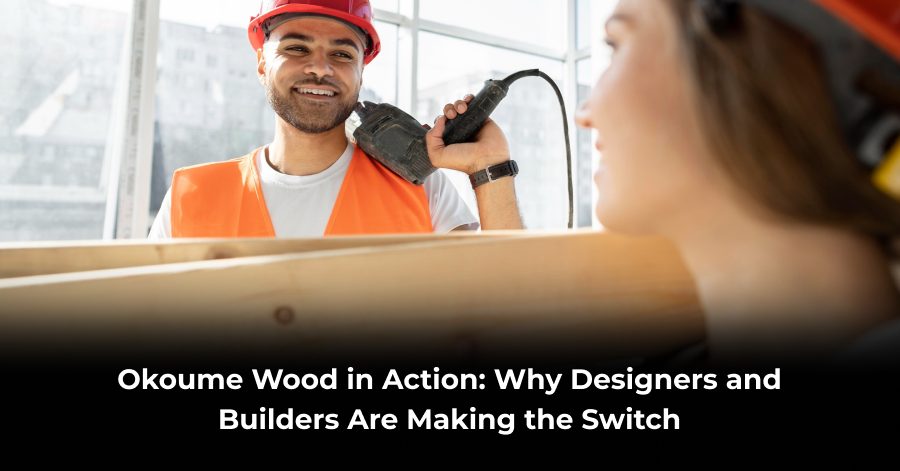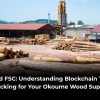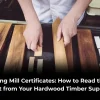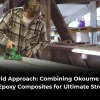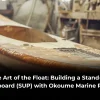Making Smarter Material Choices with Okoume plywood
Designers, architects, and construction teams are constantly looking for materials that balance quality, cost, and ease of use. That’s where Okoume wood is making a real impact. Lightweight, clean-grained, and versatile, Okoume products are seeing higher demand across commercial builds and high-end interiors.
This blog dives deep into why industry professionals are turning toward Okoume plywood, timber, and veneer as practical, scalable alternatives to traditional hardwoods.
1.Okoume Wood: A Modern Classic for Modern Builds
Okoume wood (Aucoumea klaineana) is a tropical hardwood native to Central Africa. Known for its light color and straight, smooth grain, it’s become a top material choice for applications where weight reduction and finish quality are critical.
Its growing popularity is backed by:
- Competitive cost structure
- Strong availability through certified suppliers
- Excellent machining behavior
Whether you’re running a design studio or managing bulk procurement, okoume wood gives you quality and flexibility without the limitations of heavier or more expensive hardwoods.
2. Why Okoume Plywood Works So Well
Okoume plywood is the star product in this category, often chosen for everything from interior partitions to marine paneling. Its smooth surface eliminates the need for excessive sanding or prepping, which saves production time and labor.
Designers use it in:
- Wall panel systems
- Custom furniture
- Mobile and modular structures
Its low density allows easier handling on site while still providing dependable structure. For CNC cutting, it maintains clean edges and minimal chipping—a major win for precision-based work.
3. Okoume Timber: Ideal for Lightweight Framing
Solid okoume timber is another popular option, especially in furniture and cabinetry. Compared to hardwoods like maple or birch, it’s easier on tools, faster to machine, and requires less sanding.
Use cases include:
- Drawer frames and dividers
- Subframes for sofas and chairs
- Lightweight display structures
It’s a reliable material in both high-volume manufacturing and small-batch artisanal builds.
4. Face Veneers: Bringing Premium Finishes Without the Price Tag
Okoume face veneer offers the visual appeal of high-end hardwoods without their cost or weight. It’s often used in high-traffic commercial interiors where consistency and aesthetics matter most.
Veneer applications include:
- Cabinet doors
- Acoustic panels
- Reception desk surrounds
Designers appreciate its uniform appearance and how well it accepts stains, sealers, and matte finishes. When applied to engineered cores like MDF or blockboard, it gives the appearance of premium wood with a much more manageable material cost.
5. Comparing Okoume plywood to Birch: What the Data Tells Us
A lot of procurement teams ask: how does okoume plywood compare to birch? Here’s the quick breakdown:
| Property | Okoume | Birch |
| Weight | Lighter | Heavier |
| Cost | Lower | Higher |
| Appearance | Smooth, light tone | Tight grain, yellowish hue |
| Ease of Machining | High | Moderate |
| Tool Wear | Minimal | Higher over time |
For design-heavy projects where visuals and fabrication speed are priorities, okoume is the clear winner. Birch still works great for structural-heavy builds but can be overkill for many design applications.
6. Why Designers Are Choosing Okoume plywood
Designers love materials that let them deliver beautiful results with fewer production headaches. Okoume delivers just that. Its workability means fewer revisions, its finishability allows for creative flexibility, and its availability makes it ideal for scaling projects without the sourcing stress.
Reasons creatives are switching:
- Consistent color and grain pattern
- Excellent paint and stain absorption
- Lightweight without compromising visual impact
7. Builder Benefits of Okoume plywood: Faster Turnaround and Lower Waste
Builders working with okoume report faster build cycles and less material waste. Thanks to its uniform grain and lack of major knots, more of each board is usable—which boosts yield and ROI.
In prefabrication, okoume panels stay stable across environments. They don’t cup or warp easily, and they maintain dimensional consistency between storage and site installation.
8. Sustainability: Responsible Sourcing is Possible
Many suppliers now offer FSC- and PEFC-certified okoume products. This gives designers and builders peace of mind when sourcing for public or LEED-certified projects.
If you’re working with clients who prioritize eco-conscious materials, okoume lets you deliver great design with a lower environmental impact.
Okoume plywood is the Practical Upgrade You’ve Been Looking For
Between its workability, finish quality, and cost-efficiency, okoume wood is more than just a substitute—it’s a strategic material for modern building and design. Plywood, timber, or veneer, it offers real value from concept to installation.
If you’re rethinking your material library or upgrading your spec sheets, this is your sign to make room for okoume.
Get Started with Okoume Products Today
Need help sourcing okoume plywood, timber, or face veneers? Connect with us to get samples, pricing, or technical documentation for your next project.

